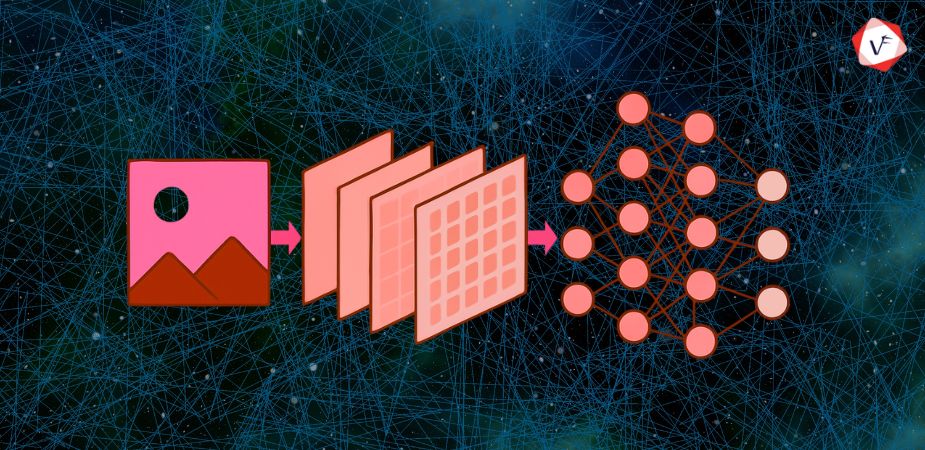
- April 25, 2025 4:45 pm
- by Kevin
What are the Emerging Cybersecurity Threats in 2025?
- April 25, 2025 4:45 pm
- by Deepthy
In an increasingly interconnected world, cybersecurity remains at the forefront of global concerns. As technological innovations progress, so do the tactics of cybercriminals. In 2025, businesses, governments, and individuals face an evolved threat landscape where attackers leverage advanced tools and exploit vulnerabilities across complex digital ecosystems.
Emerging Cybersecurity Threats in 2025
This article explores the most prominent emerging cybersecurity threats in 2025, providing insights into the challenges and strategies necessary to combat them.
AI-Powered Cyber Attacks
Artificial intelligence (AI) has become a double-edged sword in the cybersecurity domain. While AI tools are pivotal in detecting and mitigating threats, cybercriminals are also employing AI to enhance the sophistication of their attacks.
- AI-Driven Malware & Ransomware: Malicious software powered by AI can adapt to evade traditional defenses. For example, in 2025, AI-driven ransomware is capable of rapidly identifying critical systems within organizations and encrypting files with precision.
- Deepfake Exploits: Cybercriminals use AI to create convincing deepfake videos and audio recordings, facilitating scams, fraud, and misinformation. Deepfake phishing attacks targeting executives (known as "whale phishing") have surged dramatically.
- Automated Hacking: AI bots can autonomously scan networks for vulnerabilities, launch attacks, and adjust strategies in real time, making them formidable adversaries.
Organizations must deploy cybersecurity solutions enhanced by AI to counter these threats, integrating predictive analytics and machine learning algorithms to identify anomalies before significant damage occurs.
The Rise of Quantum Computing Threats
Quantum computing, while a breakthrough technology, presents substantial risks to current cybersecurity systems. Traditional encryption methods, which underpin secure communications, are particularly vulnerable to quantum-powered decryption.
- Breaking Encryption Protocols: Quantum computers have the potential to break widely used encryption standards, such as RSA and ECC, in a matter of hours. This threatens secure data transmissions in sectors like banking, healthcare, and defense.
- Post-Quantum Cryptography Challenges: As organizations transition to quantum-resistant cryptography, adversaries are exploiting gaps during this transitional phase.
- Quantum Ransomware: Attackers may use quantum technology to encrypt systems in ways that are practically impossible to decrypt without quantum capabilities.
To stay ahead, companies need to prioritize post-quantum cybersecurity solutions and prepare their systems for a future where quantum-powered attacks are prevalent.
IoT Vulnerabilities
With the proliferation of IoT devices—ranging from smart home systems to industrial sensors—the attack surface has expanded significantly. By 2025, IoT-related security threats are expected to account for a substantial portion of cyber incidents.
- Device Hijacking: Hackers can gain control of unsecured IoT devices, using them as entry points into broader networks or as part of botnets to launch Distributed Denial of Service (DDoS) attacks.
- Privacy Intrusions: Connected devices often collect sensitive user data. Poorly secured IoT systems risk exposing personal and organizational information to unauthorized entities.
- Supply Chain Exploits: IoT devices embedded in supply chains create vulnerabilities, as attackers compromise devices at manufacturing stages to infiltrate networks.
IoT cybersecurity frameworks are critical in 2025, incorporating stringent authentication protocols, regular firmware updates, and robust network segmentation to minimize risks.
Social Engineering Tactics
While advanced technology fuels cyberattacks, social engineering threats remain one of the most effective methods for breaching systems. These attacks exploit human psychology rather than technical vulnerabilities.
- Phishing Evolves: Phishing attacks in 2025 use more sophisticated tactics, including multi-layered impersonations and highly personalized messages based on data obtained through social media or data breaches.
- Hybrid Attacks: Cybercriminals combine traditional phishing techniques with new-age tools like AI-driven language models to craft deceptive communication that is nearly indistinguishable from legitimate correspondence.
- Insider Manipulation: Hackers increasingly target employees to gain unauthorized access, using tactics such as blackmail, bribery, or fraudulent job offers.
To combat these cybersecurity threats, organizations must implement ongoing employee training programs, simulate phishing scenarios, and deploy real-time monitoring solutions.
Cloud Security Risks
Cloud computing has transformed how businesses store and access data, but it also introduces unique security risks. In 2025, cloud-based cybersecurity threats continue to grow in sophistication and impact.
- Misconfigured Cloud Infrastructure: Misconfigurations are a leading cause of data breaches. Attackers exploit errors in setting permissions or encryption to access sensitive data.
- Credential Theft: With employees accessing cloud systems remotely, stolen or weak credentials expose critical business data to unauthorized users.
- Data Leakage & Shadow IT: Unmonitored applications and data storage systems increase the risk of unintentional leaks or targeted attacks.
Organizations must adopt zero-trust security models, enforce strong identity management practices, and utilize cloud-native threat detection tools to mitigate these emerging risks.
Critical Infrastructure Attacks
Cyberattacks on critical infrastructure—such as power grids, healthcare systems, and transportation networks—have become more frequent and damaging. In 2025, the consequences of such attacks are amplified by the interconnected nature of these systems.
- Energy Sector Exploits: Hackers target utilities with ransomware or sabotage, disrupting power supply and causing significant economic losses.
- Healthcare System Vulnerabilities: Medical devices and electronic health records are at risk, jeopardizing patient safety and privacy.
- Smart City Attacks: The rise of smart cities introduces vulnerabilities in urban management systems, such as traffic control, surveillance, and emergency response systems.
To protect critical systems, governments and organizations must invest in cybersecurity frameworks tailored to critical infrastructure, emphasizing redundancy, monitoring, and rapid response.
Biometric Data Exploitation
As biometric authentication becomes more prevalent, so do the risks associated with its misuse. In 2025, the emerging threats to biometric security focus on the theft, replication, and abuse of this sensitive data.
- Biometric Spoofing: Attackers replicate fingerprints, facial features, or iris patterns using advanced imaging and 3D printing technologies to bypass security systems.
- Biometric Data Breaches: Unlike passwords, biometric data cannot be reset. A breach exposes users to permanent identity theft.
- Integration Risks: When biometric systems integrate with other technologies, such as IoT or AI, attackers can exploit these connections to access broader systems.
Ensuring biometric cybersecurity involves deploying multi-factor authentication, encrypting biometric data, and regulating its storage and usage through stringent policies.
Cybersecurity Skill Shortages
Despite the growing threats, a shortage of skilled cybersecurity professionals exacerbates the problem. The demand for expertise far outpaces the supply, leaving organizations vulnerable to sophisticated attacks.
- Delayed Incident Responses: The lack of trained personnel results in slower detection and mitigation of threats.
- Overreliance on Automation: While automated tools are invaluable, overreliance on them without skilled oversight increases the risk of errors or missed vulnerabilities.
- Inadequate Training: Many organizations fail to keep their IT staff updated on the latest attack trends, leaving gaps in their defenses.
Investing in cybersecurity workforce development, partnering with specialized firms, and utilizing managed security services can help bridge this gap.
Regulatory & Compliance Challenges
As governments introduce new regulations to address cybersecurity challenges, organizations face increasing pressure to remain compliant. However, these regulatory frameworks vary widely, creating compliance challenges.
- Data Sovereignty Issues: International businesses must navigate laws that mandate data storage and processing within specific jurisdictions.
- Evolving Standards: Compliance requirements often change faster than organizations can adapt, increasing the risk of penalties.
- Cyber Insurance Complications: Insurers impose stricter conditions, requiring businesses to demonstrate robust security practices before issuing policies.
Proactive adoption of compliance management tools and close collaboration with cybersecurity experts are essential to navigate this complex regulatory environment.
Rise of Cyber Warfare
Nation-state cyberattacks are intensifying, with adversaries targeting political systems, economic structures, and military capabilities. In 2025, cyber warfare tactics grow more destructive and precise.
- Espionage & Surveillance: Nation-states deploy sophisticated malware to gather intelligence on rivals.
- Critical System Disruption: Cyber warfare often targets infrastructure essential for national security, such as transportation or energy grids.
- Disinformation Campaigns: Cyberattacks increasingly aim to manipulate public opinion, disrupt elections, and sow societal discord.
To counteract these threats, international cooperation on cybersecurity policy frameworks and investment in advanced defensive technologies are imperative.
The Evolution of Ransomware in 2025
Ransomware has long been a major cybersecurity concern, and by 2025, its evolution has made it even more destructive and pervasive.
Key Trends in Ransomware Attacks:
- Double & Triple Extortion: Ransomware attacks have moved beyond simple data encryption. In 2025, cybercriminals often demand multiple payments: one to decrypt data, another to prevent stolen information from being leaked, and a third for ceasing attacks on victims’ customers or partners.
- Ransomware-as-a-Service (RaaS): The proliferation of RaaS platforms enables less-skilled hackers to launch sophisticated ransomware campaigns. These platforms offer pre-built malware, guides, and support to anyone willing to pay, significantly lowering the barrier to entry for cybercriminals.
- Targeting Critical Sectors: Attackers are increasingly focusing on industries like healthcare, finance, and logistics, where downtime can lead to life-threatening consequences or severe financial losses, compelling victims to pay the ransom.
Defending Against Ransomware:
- Regular Backups: Routine data backups stored in isolated environments ensure that businesses can recover without paying a ransom.
- Endpoint Protection: Advanced endpoint detection and response (EDR) solutions help identify and block ransomware before it infiltrates systems.
- Network Segmentation: Limiting the spread of ransomware by segmenting networks and restricting access to critical systems reduces potential damage.
As ransomware continues to adapt, the focus must shift from reactive measures to proactive defenses. Partnering with industry leaders like Vofox’s cybersecurity services ensures that businesses remain resilient against the ever-evolving ransomware landscape.
Final Thoughts
The emerging cybersecurity threats in 2025 highlight the importance of proactive measures and resilient defenses. From AI-powered cyberattacks and IoT vulnerabilities to quantum computing risks, the evolving landscape requires a multi-faceted approach that combines advanced technology, skilled personnel, and strategic foresight. For businesses aiming to safeguard their systems, partnering with a reliable cybersecurity provider is critical. Vofox's cybersecurity services offer comprehensive solutions tailored to meet modern challenges, ensuring robust protection against even the most sophisticated threats. Give us a ping to know more.




